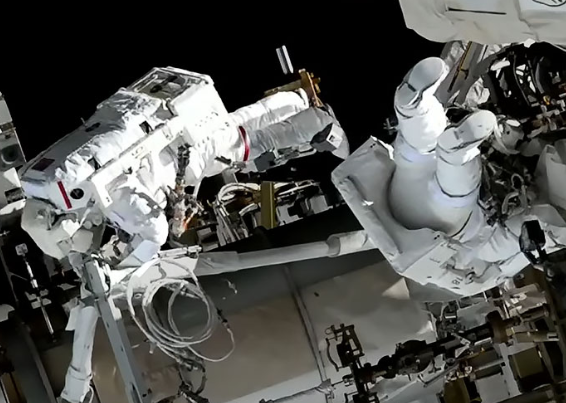
NASA astronaut Nicole “Duke” Mann and Japan Aerospace Exploration Agency astronaut Koichi Wakata conduct a spacewalk outside the International Space Station on Jan. 20.
HOUSTON—U.S. and Japanese astronauts carried out preparations for the installation of a third and final pair of Roll Out Solar Arrays (iROSAs) on the International Space Station’s (ISS) long solar power truss with a more than 7-hr. spacewalk on Jan. 20. The excursion took NASA astronaut Nicole “Duke...
Subscription Required
Spacewalkers Prep Space Station For Final Roll Out Solar Arrays is published in Aerospace Daily & Defense Report, an Aviation Week Intelligence Network (AWIN) Market Briefing and is included with your AWIN membership.
Already a member of AWIN or subscribe to Aerospace Daily & Defense Report through your company? Login with your existing email and password.
Not a member? Learn how you can access the market intelligence and data you need to stay abreast of what's happening in the aerospace and defense community.
